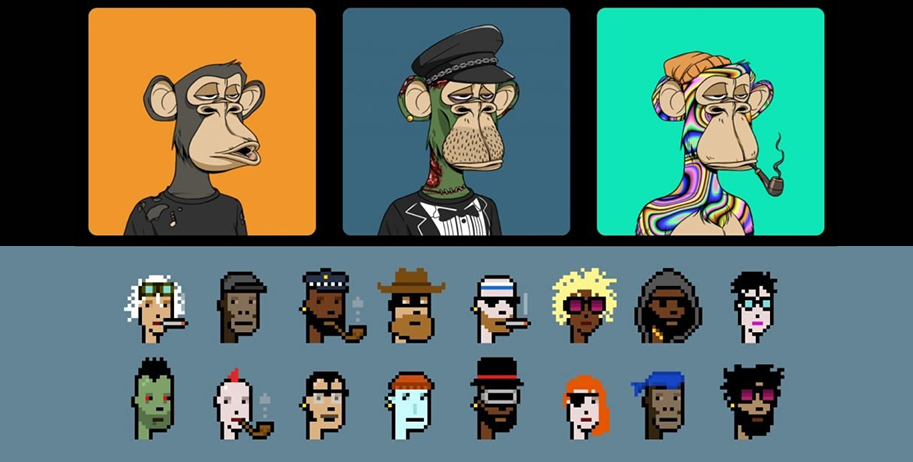Are NFTs Opportunities to Retail Industries?
Since 2021, NFTs have been embraced by fashion and beauty industries around the world, and they are currently making a fast and furious entry into digital arts and physical stores.
What exactly is NFT?
If you have not been keeping up with the news lately, nothing beats an explosion of blockchain news that leave you thinking, “What’s going on here?” more than NFT and Metaverse these days.
Non-fungible token, or NFTs as they are more commonly known, is the current talk of the art world.
To start off with, an NFT is a digital asset that represents real-world objects such as art, music, and videos. The purchase of an NFT is simply “a cryptographically signed receipt that you own a unique version of a work” that grants the purchaser ownership of the specific copy or version of the work that the NFT represents. You can buy and sell them online using both cryptocurrency and credit cards.
Each NFT is unique and you can use it to prove ownership or authenticity of a virtual object like a digital artwork. NFT can be simply understood as a digital ID card that does not require institutional certification.
Now, you may wonder what is the difference between Fungible Tokens (like Bitcoin) and Non-Fungible Tokens. The difference is, while one digital coin may be the same as another in Fungible Tokens (FTs) and you can divide them into units as small as 0.00000001, each NFT is a one-off with only one certified owner, even if the associated file can be copied.
Simply put, NFTs can be anything – in the form of art, newspaper articles or tweets, and even memes.
Although they have existed as early as 2014, the popularity of NFTs only rose rapidly in 2021, with trading figures hitting as high as $10.7 billion in the third quarter.
In the world of NFTs, anything can be monetised and sold, which is also part of their appeal. These NFTs are stored on a blockchain, the database that cryptocurrency relies on. However, unlike crypto, NFTs cannot be exchanged with another digital asset (You can’t exchange a Mona Lisa digital painting with a Piccaso digital painting, or an expensive vase for another expensive vase as there will be differences in artwork style and materials).
NFT is currently mostly used in copyrighted digital products, digital artworks, and virtual products with special commemorative value, and certificates that map to physical high-end products.
A great example would be this picture which is available on https://mintspace.io/product/nueva-mente/ for $250. After purchasing it, you will be issued an NFT representing this picture, ensuring that you have the original version.
Many people may be confused and ask, “Isn’t that the same as a replica? What is the difference?” The answer is nil. Are there many people who can tell the difference between the original Picasso and the replica? Not many. This brings us to the question of why is it so expensive. The real difference lies in the difference between genuine and replica. The NTF technology guarantees that the digital products are genuine.
Each NFT that is sold has no equivalent, and the blockchain technology is used to establish sole ownership and digital provenance. If you own an NFT, you can resell this digital asset on specialised online marketplaces – a lucrative investment opportunity which attracts many investors.
Besides containing information about the product’s past and present, each NFT also provides its owner with a dynamic track of ownership – both the product usage and record is transparent and accessible to all.
Thanks to the NFTs’ decentralised nature which enables owners to cut out the middleman, million-dollar digital artworks are now being sold around the world. Their popularity can also be explained by the fact that they are simultaneously exclusive and are becoming more affordable – which means anyone with an internet connection and enough capital can participate in the world of collective NFTs.

The NFT Marketplace
Whether you are looking at the NFT environment as a new distribution channel, looking forward to extend your brand(s) into these environments or simply want to be relevant to the metaverse demographic, an NFT marketplace will be your gateway to participating in the purchase and sale of these digital assets.
From art to music to virtual worlds, marketplaces provide you with the opportunity to not only create, but also sell, purchase, bid, collect, trade or showcase your works. There are several large-scale NFT marketplaces currently where you can buy, sell, and discover exclusive digital items. One of the world’s first and largest NFT marketplace is OpenSea – which bring together artists, creators, as well as crypto enthusiasts on a single platform.
The NFT Industry
According to Bloomberg, a new estimate from blockchain analytics firm Chainalysis Inc. has shown that the NFT market had successfully surpassed $40 Billion in 2021.
While the NFT concept is complex, NFTs also helps to create an entirely new market of consumers who don’t need to understand blockchain in order to participate in NFT.
The world of retail is seeing value in NFTs. Is there a future in NFTs for retailers? That depends in part on your brand and target market. In fact, NFTs can be a way of driving sales and is a lucrative way of increasing revenue from consumers.
Currently for the retail industry, NFT can only be applied to products with copyright value, due to the fact that people usually do not certify products with low value. These products must be virtual, such as music, artwork, video game props, etc. and whose value is not easy to measure.
Nevertheless, there is no hard rule that NFT can only be applied to something of value. In some cases, the willingness of the buyer can also become a price determining factor. The NFT market has grown from a niche area for only technology and crypto enthusiasts to something that is more accessible to the average consumer.
An excellent example would be globally well-known Taiwanese singer Jay Chou, whose company, PHANTACi released its first NFT project – Phanta Bear, and sold 10,000 Phanta Bears with a total price exceeding US$10 million in just a mere 40 minutes.
Although not much is known about the buyers, it is undeniable that Chou’s popularity with global fans and crypto enthusiasts among them are also potential factors that allow the average consumer to pay heed to the increasing popularity in NFTs.
The Metaverse
If 2021 was the year to know about fancy TV features, 2022 is set to be the year where everyone gets truly educated on a whole new level on the tech front.
With tech companies like Apple, Sony and Meta rolling out big plans in VR adoption for both work and play in the metaverse arena, and famous celebrities like Eminem and JJ Lin spending large amounts of money on digital assets, there will be an increasing need to get yourself educated on what is metaverse, as well as blockchains and NFTs.
So, what is Metaverse?
To put it simply, the metaverse is a persistent virtual world where people can work, play, and shop from anywhere using a virtual reality headset, augmented reality glasses, a phone, or any other compatible device. It is also the world where your digital self can reside. This digital self is also known as an avatar. Your avatar can move around and interact with other avatars in the virtual world.
How are NFT and Metaverse related and what do they really means for the Retail industry?
NFT is set to be the ID card of metaverse products. As products in the metaverse are all virtual, you can only rely on NFT to help you identify whether the product is a genuine or replica.
For example, let’s say you own a huge house in metaverse. Not only can the NFT help you identify who is the virtual architect, the date it was built, and which celebrities lived there, it can also be resold in the metaverse. NFT is the certificate of this digital asset.
NFTs can also do a couple of things for retailers, such as certifying the authenticity and uniqueness of a product, and support the premium prices that come with it, as well as complementing physical products so as to enhance the value retailers aim to deliver to the customer. These digital complements can even come in the form of personal messages from the digital asset designer. Lastly, as NFTs are by definition limited and unique, it can help retailers create promotional buzz for its brand(s) while acting as a fodder for enthusiastic collectors.
Thank you for reading this blog! As an appreciation for our readers, you can collect a $2 GrabFood voucher here: https://www.retailtechnpn.com/sg/bp3
Please help to like, share and leave any comments you have below. Stay tune for more of our blog content. Thank you!









